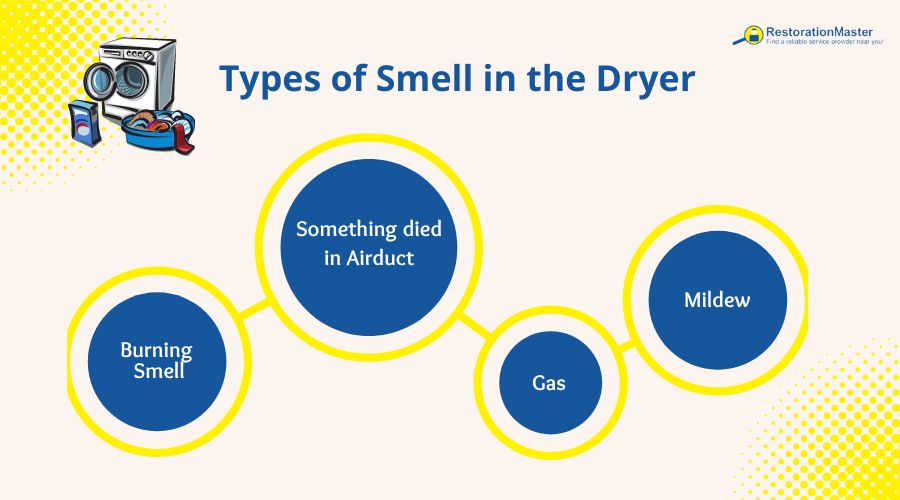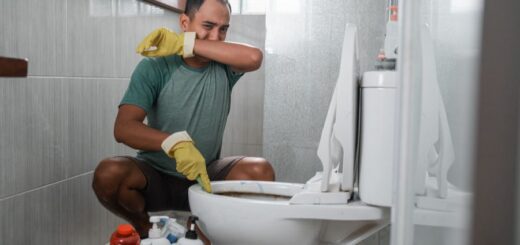Why Does My Dryer Smell Like Mildew?
If you’ve noticed a moldy smell coming from your dryer, you’re not alone. It can be frustrating, but there are a few common reasons this might happen. Let’s break down some possible causes and what you can do to tackle them.
What Causes a Moldy Smell in Your Dryer?
- Wet Clothes Left Too Long: One of the most common culprits is simply leaving damp clothes in the dryer for too long. If those clothes sit there, they can start to smell musty. To prevent this, try to get your laundry out of the dryer as soon as it’s done.
- Lint Buildup: Lint can accumulate in your dryer and its ducts, blocking airflow and creating a perfect environment for mildewMildew is a type of fungus that grows on damp surfaces, typi... More to grow. Make it a habit to clean the lint filter every time you use the dryer, and consider getting your ducts cleaned by a pro from time to time.
- Poor VentilationVentilation is the process of exchanging or circulating air ... More: If your dryer vent isn’t working properly, it can trap moisture, leading to odors in your laundry room. Check to ensure your vent is clear and functioning well.
Different Types of Odors and What They Mean

Here’s a quick guide to help you identify the smells coming from your dryer:
- Musty smell: When your dryer smells like mildew, it may be caused by leaving wet or sweaty clothes in the dryer for a long time. Also, if you have lint buildup in your dryer duct, it may prevent air from flowing freely and mildewMildew is a type of fungus that grows on damp surfaces, typi... More can grow in the duct which will cause a bad odorAn odor is a smell, often detectable by the human nose, whic... More.
- Burning smell: If you are experiencing a burning smell in your home, it may be due to using an electric dryer for the first time. However, the smell should disappear quickly. If you experience this smell continuously, you may have an issue with your power cord. If that is the case, it should be replaced.
- Gas: If you have a gas-powered dryer, you may experience a gas small the first few uses. However, this smell should disappear and if it doesn’t, you should address it as you may have a gas leak or an issue with your gas supply. If you smell gas from your dryer, continuously make sure you get it checked out professionally.
- Something may have died inside your duct: If you are getting a smell where you think something may have died inside, that may actually be the issue. Small animals can get into the dryer duct and create a bad odorAn odor is a smell, often detectable by the human nose, whic... More if they die inside. If you experience this issue, it is important to get it addressed professionally. A professional dryer duct cleaning company will be able to clean and disinfect your dryer duct properly.
How to Clean a Dryer that Smell Like Mildew
If you are having odorAn odor is a smell, often detectable by the human nose, whic... More issues with your dryer, it is important for you to clean it properly. Fortunately, cleaning your dryer is a straightforward process. Here’s how to tackle the problem and get your dryer back to smelling fresh.

Gather Your Supplies
Before you get started, gather the following supplies:
- Vacuum Cleaner with a hose attachment
- Microfiber Cloths or Rags
- Mild Dish Soap
- White Vinegar
- Baking Soda
- Spray Bottle
- Soft Brush (like an old toothbrush)
- Screwdriver (if you need to remove the vent)
Unplug the Dryer
Safety first! Before doing any cleaning, unplug the dryer from the power source. This ensures you won’t accidentally turn it on while working on it. If it’s a gas dryer, turn off the gas supply as well.
Remove Lint and Debris
- Check the Lint Trap: Start by removing the lint trap and cleaning it thoroughly. Use your vacuum cleaner or a brush to get rid of any lint buildup. Don’t forget to wipe it down with a damp cloth to remove any residueResidue is any leftover material, such as soot, dust, or che... More.
- Vacuum Inside the Dryer: Use the vacuum hose to clean out the inside of the dryer. Get into the lint duct as much as you can, as this is where mildewMildew is a type of fungus that grows on damp surfaces, typi... More often hides. Make sure to remove any lint that might be stuck in there.
Clean the Drum
- Make a Cleaning SolutionA solution is a homogeneous mixture of two or more substance... More: In a spray bottle, mix equal parts of white vinegar and water. You can also add a few drops of mild dish soap to enhance the cleaning power.
- Wipe Down the Drum: Use a microfiber cloth or rag to wipe down the inside of the dryer drum with the vinegar solutionA solution is a homogeneous mixture of two or more substance... More. Pay close attention to any areas where you notice moldMold is a type of fungus that grows in damp or humid conditi... More or mildewMildew is a type of fungus that grows on damp surfaces, typi... More growth. For stubborn spots, let the solutionA solution is a homogeneous mixture of two or more substance... More sit for a few minutes before wiping it away.
- Use Baking Soda for Odors: If the mildewMildew is a type of fungus that grows on damp surfaces, typi... More smell lingers, sprinkle a bit of baking soda inside the drum and let it sit for 15-20 minutes. Baking soda is great for absorbing odors. Afterward, wipe it out with a damp cloth.
Clean the Door Seal
- Examine the Rubber Seal: Check the rubber door seal for any signs of moldMold is a type of fungus that grows in damp or humid conditi... More or mildewMildew is a type of fungus that grows on damp surfaces, typi... More. This area can trap moisture, leading to unpleasant smells.
- Wipe the Seal: Use a damp cloth with the vinegar solutionA solution is a homogeneous mixture of two or more substance... More to clean around the seal thoroughly. If there’s any buildup, use a soft brush to scrub it gently. Make sure to dry this area completely to prevent further moisture accumulation.
Inspect and Clean the Vent
- Check the Vent: If your dryer vent is clogged, it can trap moisture and leadLead is a heavy metal that can be toxic to humans, especiall... More to mildewMildew is a type of fungus that grows on damp surfaces, typi... More smells. If possible, detach the vent from the back of the dryer using a screwdriver.
- Clean the Vent Duct: Use a vacuum cleaner or a long brush to clean the inside of the vent duct. If you notice any significant lint buildup or blockages, you might want to consider calling a professional to handle the cleaning.
Run a Test Cycle
Once everything is cleaned and reassembled, it’s time to run a test cycle:
- Plug the Dryer Back In: Reconnect the dryer to the power source or turn the gas back on if you have a gas dryer.
- Run an Empty Cycle: Run the dryer on a high heat setting for about 15-20 minutes with no clothes inside. This will help evaporate any remaining moisture and freshen up the dryer.
Prevent Future Mildew Smells
To keep your dryer smelling fresh in the long run, consider these tips:
- Remove clothes promptly after each dryingDrying is the process of removing moisture from materials, s... More cycle to prevent dampness.
- Leave the dryer door open for a while after use to allow airflow.
- Regularly clean the lint trap and ducts to prevent lint buildup.
- Check the vent regularly for obstructions and ensure it’s clear.
Mold Removal Services
Are you experiencing issues with mildewMildew is a type of fungus that grows on damp surfaces, typi... More in your home? Call mold remediation professionals for help. They will remove any extra moisture from your home caused by water damage, including hidden areas such as behind walls or ceilings. They will also repairRepair is the act of fixing or restoring damaged property, m... More the damage caused by moldMold is a type of fungus that grows in damp or humid conditi... More and ensure that the moldMold is a type of fungus that grows in damp or humid conditi... More or mildewMildew is a type of fungus that grows on damp surfaces, typi... More has been fully removed to prevent further damage and protect the health of you and your family.












